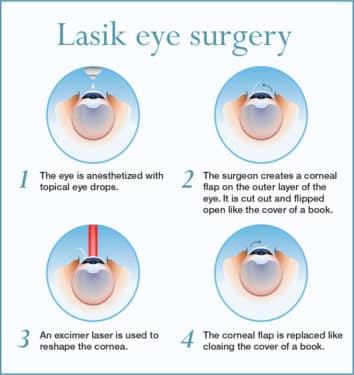Intrigued In Finding Out About The Differences Among SMILE, LASIK, And PRK Treatments For The Eyes?
Intrigued In Finding Out About The Differences Among SMILE, LASIK, And PRK Treatments For The Eyes?
Blog Article
Content By-Ryberg Michelsen
If you have actually been considering SMILE eye surgical procedure, you may question exactly how it compares to LASIK and PRK. what is the average cost of cataract surgery per eye has its own collection of benefits and factors to consider. From quicker healing times to potential threats, there are essential distinctions you ought to be aware of prior to choosing. Recognizing these differences will certainly help you make an educated choice that aligns with your details demands and expectations. Interested to understand even more regarding exactly how these procedures compare carefully? Keep discovering to obtain a detailed understanding of SMILE, LASIK, and PRK.
SMILE Eye Surgical Treatment Review
If you're considering SMILE eye surgical procedure, you'll discover it to be a minimally invasive treatment with a quick healing time. During SMILE (Tiny Cut Lenticule Extraction), a laser is made use of to produce a tiny, accurate incision in the cornea to get rid of a little item of tissue, improving it to correct your vision. This varies from LASIK, where a flap is created, and PRK, where the outer layer of the cornea is entirely removed.
One of the key benefits of SMILE is its minimally invasive nature, leading to a faster healing process and much less discomfort post-surgery. The healing time for SMILE is reasonably fast, with numerous people experiencing boosted vision within a day or two. This makes it a prominent choice for those seeking a hassle-free and effective vision modification treatment. Furthermore, SMILE has been revealed to have a reduced danger of dry eye disorder compared to LASIK, making it a positive alternative for individuals worried about this prospective side effect.
Differences Between SMILE, LASIK, and PRK
When contrasting SMILE, LASIK, and PRK eye surgical procedures, it is necessary to comprehend the distinctive methods used in each treatment for vision correction.
SMILE (Little Laceration Lenticule Removal) is a minimally invasive treatment that involves producing a tiny cut to remove a lenticule from the cornea, improving it to remedy vision.
LASIK (Laser-Assisted Sitting Keratomileusis) entails producing a slim flap on the cornea, using a laser to improve the underlying tissue, and then rearranging the flap.
PRK (Photorefractive Keratectomy) removes the external layer of the cornea before improving the tissue with a laser.
The main distinction depends on the method the cornea is accessed and treated. SMILE is flapless, making it a great option for individuals with slim corneas or those involved in call sporting activities. LASIK supplies fast aesthetic recovery due to the flap development, however it might position a higher risk of flap-related difficulties. PRK, although having a much longer recovery period, stays clear of flap-related problems completely.
Recognizing cataract surgery which lens is critical in selecting one of the most suitable treatment for your vision improvement requirements.
Benefits And Drawbacks Contrast
To assess the advantages and disadvantages of SMILE, LASIK, and PRK eye surgeries, it's necessary to take into consideration the details benefits and possible limitations of each procedure. SMILE surgical procedure uses the benefit of a minimally intrusive treatment, with a smaller sized incision and potentially quicker healing time contrasted to LASIK and PRK. Recommended Web-site minimizes the risk of dry eye post-surgery, a typical side effect of LASIK. Nonetheless, SMILE may have limitations in treating greater levels of myopia or astigmatism contrasted to LASIK.
LASIK surgical treatment provides quick visual recuperation and marginal pain throughout the procedure. It's very reliable in dealing with a variety of refractive errors, consisting of myopia, hyperopia, and astigmatism. Yet, LASIK carries a risk of flap complications, which can affect the corneal framework.
PRK eye surgical procedure, while not as prominent as LASIK, prevents creating a corneal flap, reducing the threat of flap-related problems. It's suitable for people with thin corneas or irregular corneal surface areas. Nevertheless, PRK has a longer recovery time and might involve more discomfort throughout the recovery procedure.
Final thought
So, when it comes to selecting between SMILE, LASIK, and PRK, consider it like choosing the best pair of footwear. SMILE resembles a smooth, comfortable set of tennis shoes - fast and very easy.
LASIK is much more like fashionable high heels - flashy and quickly, but with some potential dangers.
PRK resembles strong treking boots - dependable and sturdy, but calling for a little bit even more effort and time.
Inevitably, the best choice relies on your private demands and preferences.
